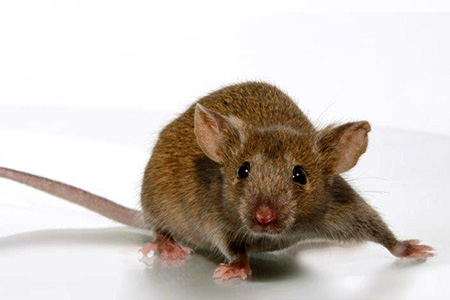 The rasH2™ mouse model is used for carcinogenicity testing of genotoxic and non-genotoxic compounds. Over the last decade, it has become the leading alternative to the traditional 2-year rodent lifetime bioassay. In a recent opinion article, Paranjpe et al. (Paranjpe et al., 2014, Toxicologic Pathology, XX: 1-10), evaluated study design of carcinogenicity studies using the rasH2™ mouse model, particularly with respect to the dose groups of the compound being tested. They have provided recommendations on altering the study design to improve predictability and human relevance of these carcinogenicity studies.
The rasH2™ mouse model is used for carcinogenicity testing of genotoxic and non-genotoxic compounds. Over the last decade, it has become the leading alternative to the traditional 2-year rodent lifetime bioassay. In a recent opinion article, Paranjpe et al. (Paranjpe et al., 2014, Toxicologic Pathology, XX: 1-10), evaluated study design of carcinogenicity studies using the rasH2™ mouse model, particularly with respect to the dose groups of the compound being tested. They have provided recommendations on altering the study design to improve predictability and human relevance of these carcinogenicity studies.
Carcinogenicity Study Design and Maximum Tolerated Dose (MTD)
The general experimental design for rasH2™ mouse carcinogenicity studies has four groups of 25 animals per sex per group: a control dose group and three test article-treated dose groups (low-, mid-, and, high-dose groups). There is a fifth group of 10 mice/sex as a positive control. The highest test article dose group is usually set at what is known as the MTD, which is the highest dose that is expected to: elicit minimal signs of toxicity, not cause >10% decrease in body weight gain compared to controls, not shorten the animal's normal longevity, or unduly compromise normal well-being of the animal, except for the carcinogenic effects of the test article. The selection of doses and the MTD for a 26-week carcinogenicity study are determined by first conducting a 28 day range finding study (using wild type littermate animals) prior to the 26-week carcinogenicity study. Important to bear in mind is that the MTD determined by such a dose range study is really an estimated MTD (EMTD). A big question in the field is whether the doses and selected MTD based on the above expectations (or assumptions) are correct. Several retrospective studies have shown that at least in case of the 2-year rodent carcinogenicity assay, these expectations/assumptions have often resulted in an overestimation of the MTD.What Does the High Dose Group Tell Us?
In their recent article, Paranjpe et al. retrospectively analyzed data from 29 carcinogenicity studies that were performed using the rasH2™ mouse model. They concluded that the MTD in the high-dose group of both sexes was over-estimated, and these high-dose groups did not provide any information on the carcinogenic effects of the test article. They found that the drop in % body weight gain was >10% in the high-dose group and this was not because of decreased food consumption. Furthermore, they found that the % mortality was higher in the high-dose group and this was not because of the carcinogenic effects of the test-article. Interestingly, they found that while tumor incidence increased proportionately in the low- and mid-dose groups, it did not do so in the high-dose group. Moreover, more animals died of undetermined causes in the high-dose group. Paranjpe et.al. concluded that the high-dose group at MTD could not detect a carcinogenic effect, whereas the low- and mid-dose groups were useful in detecting carcinogenic effect.Recommendations From the Retrospective Analysis
Based on their analysis, Paranjpe et al make several interesting recommendations regarding study design when using the rasH2™ mouse model. The key recommendation is dropping the high-dose group. In addition to the control group and the positive control group, they suggest using only two test-article treatment groups in each sex instead of the three groups as in current study designs. They recommend that the highest dose group in males should be set at no more than half of EMTD and in females should be set at no more than two-third EMTD and that the lower dose groups should be one fourth of EMTD in male mice and one-third of EMTD in female mice.What Does This Mean?
Eliminating one dose group in study design will result in 25% reduction in use of animals, contributing with a positive impact on both the 3Rs of animal research and cost reduction in carcinogenicity testing. Should a third treatment group be desired, they suggest setting that dose at one-eighth of EMTD for males and one-sixth EMTD for females.While these recommendations may be valuable in generating relevant carcinogenicity data, a potential problem could arise in using only two test-article treatment groups. A situation where data from one group becomes unusable (e.g., unexpected mortality or other unforeseen circumstances) or where it is hard to determine a trend in tumor formation in the two groups could jeopardize the entire data set from the study. It is early to tell, whether the field of carcinogenicity testing will adopt these recommendations. However, such refinements of study design can certainly help obtain relevant information using fewer animals and at lower cost. If the intense discussions on this subject, at the 2015 Society of Toxicology Annual meeting, are any indication, then there is active interest in the field on refining current methods and changing how carcinogenicity testing might be done in the future.















.jpg)

.jpg)
.jpg)
.jpg)
.jpg)





.jpg)


.jpg)
.jpg)

.jpg)


.jpg)





.jpg)

.jpg)





